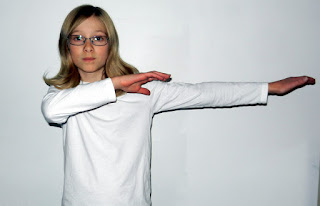 |
| How does a life with or without music practice change your brain? Photo by T. Gaertner |
When I have kids who are struggling with their piano pieces,
I try to encourage them by acknowledging that playing the piano is hard. In fact, by learning how to play
music, they are actually changing the
structure of their brain.
But how much am I exaggerating here? How much does musical
training really change your brain?
There’s some pretty good evidence to support the fact that
musical training causes people to have larger auditory cortex, a larger hand
area in the motor part of their cortex, and better connections between these
two areas and between the two sides of the brain. This research has generally
been done two different ways: a) by comparing the brains of musicians to those
of non-musicians and b) by giving music lessons to children and seeing how their brain structure changes.
Both of these types of research have the same problem: we
can’t tell what differences are caused by practice and what are caused by
genetics. Perhaps people who have brains that grow larger auditory cortex (for
example) are the ones who have a natural talent for music, and so they continue with lessons and
become musicians. In other words, maybe it was the brain structure that caused
the person to be a musician, not the other way around. Maybe the kids who stick
with music lessons are the ones whose brains are genetically predisposed to
being “musical”.
What would be really useful is some magical way of taking a
single person and seeing what their brain would look like with and without a
lifetime of musical practice.
A recently-published study has managed to do the next best
thing. The researchers, Örjan de Manzano and Fredrik Ullén, at the Karolinska
Institute in Sweden, studied 9 identical twin pairs in which one twin studied
piano and the other did not. In each pair, both twins started music study at
the same time but one dropped out of lessons quite early while the other
continued with piano lessons. On average, the piano-studying twin had played
the piano for over 4000 hours more than the twin who quit piano, and the playing twin
was still an active amateur pianist.
The researchers looked to see what differences in
brain structure were found between the practicing and non-practicing twins,
assuming that if the piano-playing twin hadn’t practiced, their brain would look
like their twin’s (which is a reasonable assumption, based on other twin
studies). Basically, the non-practicing twin acted as a control for the
practicing twin.
What they found confirmed some of what had been found in
previous studies: musical training leads to a thicker cerebral cortex in
auditory and motor areas on the left side of the brain and a greater volume of
grey matter in parts of the cerebellum, which plays a role in motor control. Musical
training also increases the organization of white matter in the auditory and
motor parts of the cortex on both sides of the brain and in the corpus callosum,
which connects the two hemispheres.
These changes in brain structure are found in the parts of
the brain most used in piano practice. When we practice, we’re connecting
auditory information with motor control, linking up the movements that we need
to make in order to produce audible musical sounds. In the brains of musicians, the auditory cortex,
the motor cortex, and the fibre bundles that connect these regions are bigger and
better organized. Also, the corpus callosum, which plays a role in bimanual
co-ordination, has more organized structure. These differences in brain
structure between piano-playing and non-playing twins are clearly not due to
genetic differences, so they must be due to differences in life experience. In
other words, hours and hours of music practice have altered the structure of
the playing twins’ brains.
This result does not mean that genetics has no role in
musical ability. Other research from the same lab at the Karolinska Institute has suggested that amount of practice is less important to musical expertise than genetic factors. Our genetics not only influence the fluidity of
our motor control and our ability to discriminate pitches and keep a beat, but
also shape how much we’re willing to practice, our ability to focus, and our
emotional and motivational responses to music. But, as this twin study clearly
reveals, our day-to-day experiences with music also play an important role. The
question is not whether musical ability is shaped by nature or nurture; as
with almost everything, both play a role. The interesting question is how
nature and nurture interact to mold our abilities.
So yes, music practice really is changing your brain. Of
course, music study is not necessarily unique in this regard. Anything you
spend a lot of time doing is going to change your brain. For example, expert
basketball players surely have different brains too. But not all skills lead to
long-term, large changes in brain structure. In fact, there is a theory that learning a new skill causes brain growth at first, but then as the skill is solidified, brain structure is renormalized and returns to its original size. The fact that this doesn’t seem to happen with musical training
suggests that playing an instrument depends on a difficult set of skills requiring
specialization of a number of parts of the brain. Mastering these skills does
not come without effort.
As for my struggling students: Knowing that this is true
doesn’t make it less work, but perhaps it can be reassuring, and motivate them
to keep growing the auditory-motor parts of their brains, synapse by synapse.
References:






